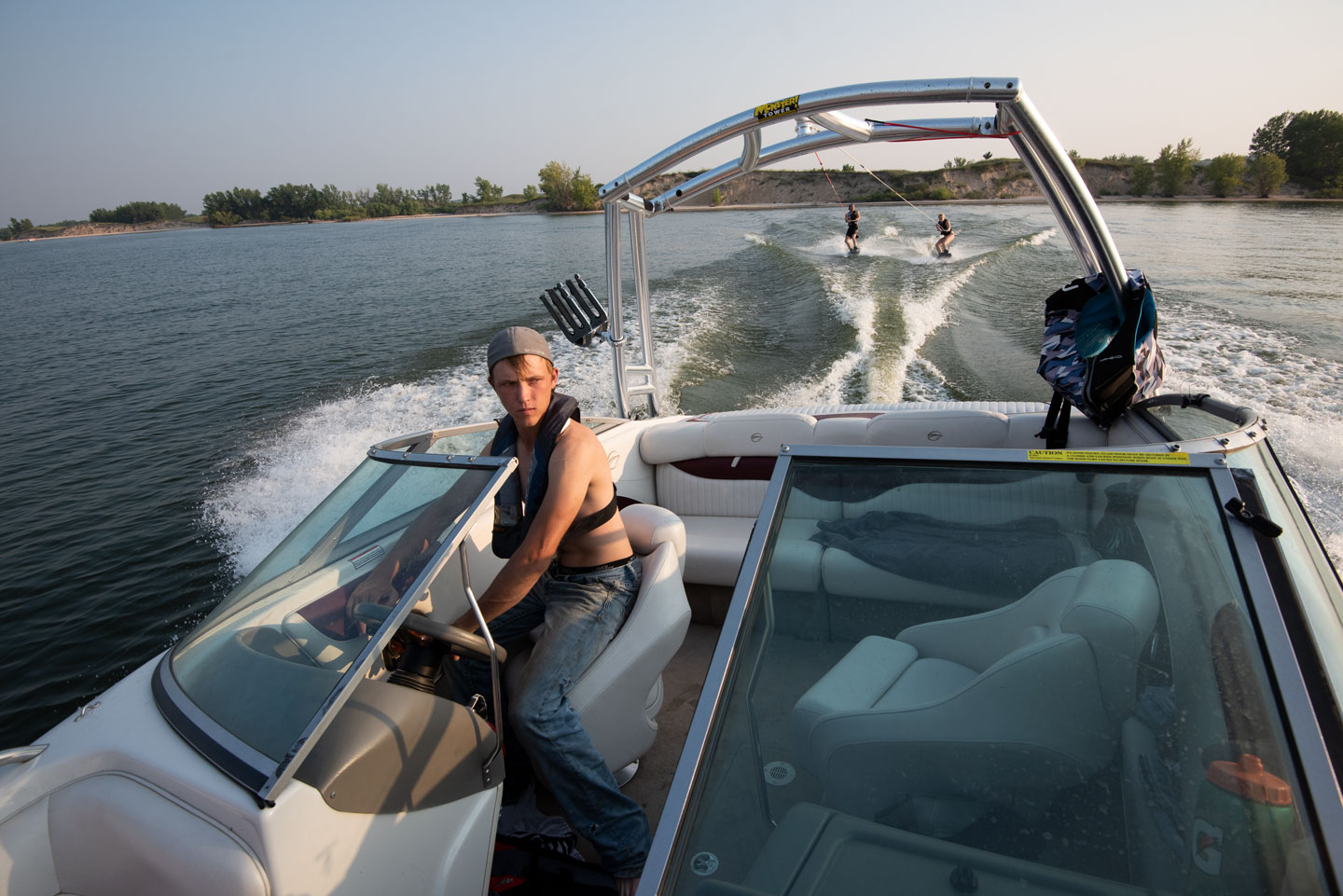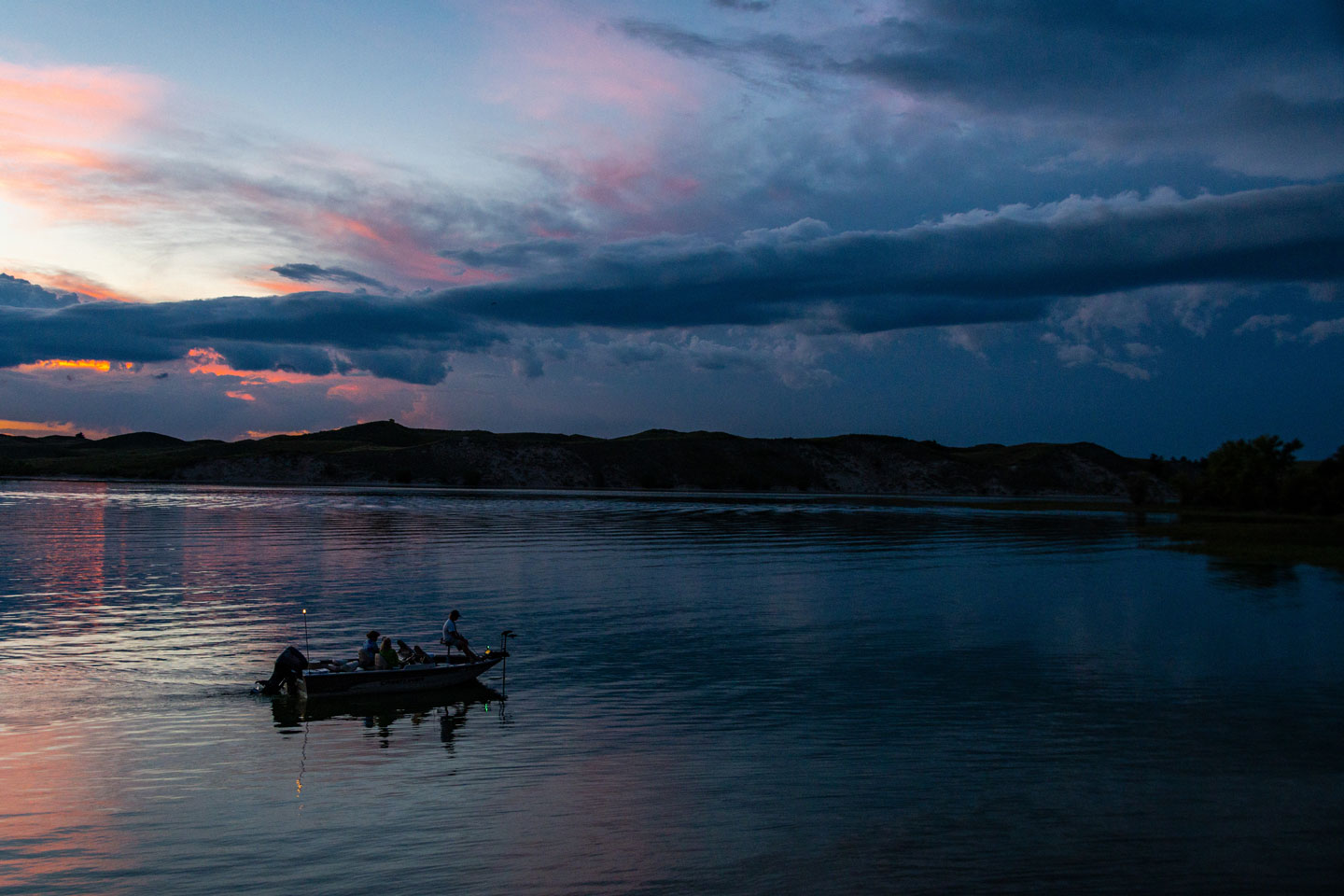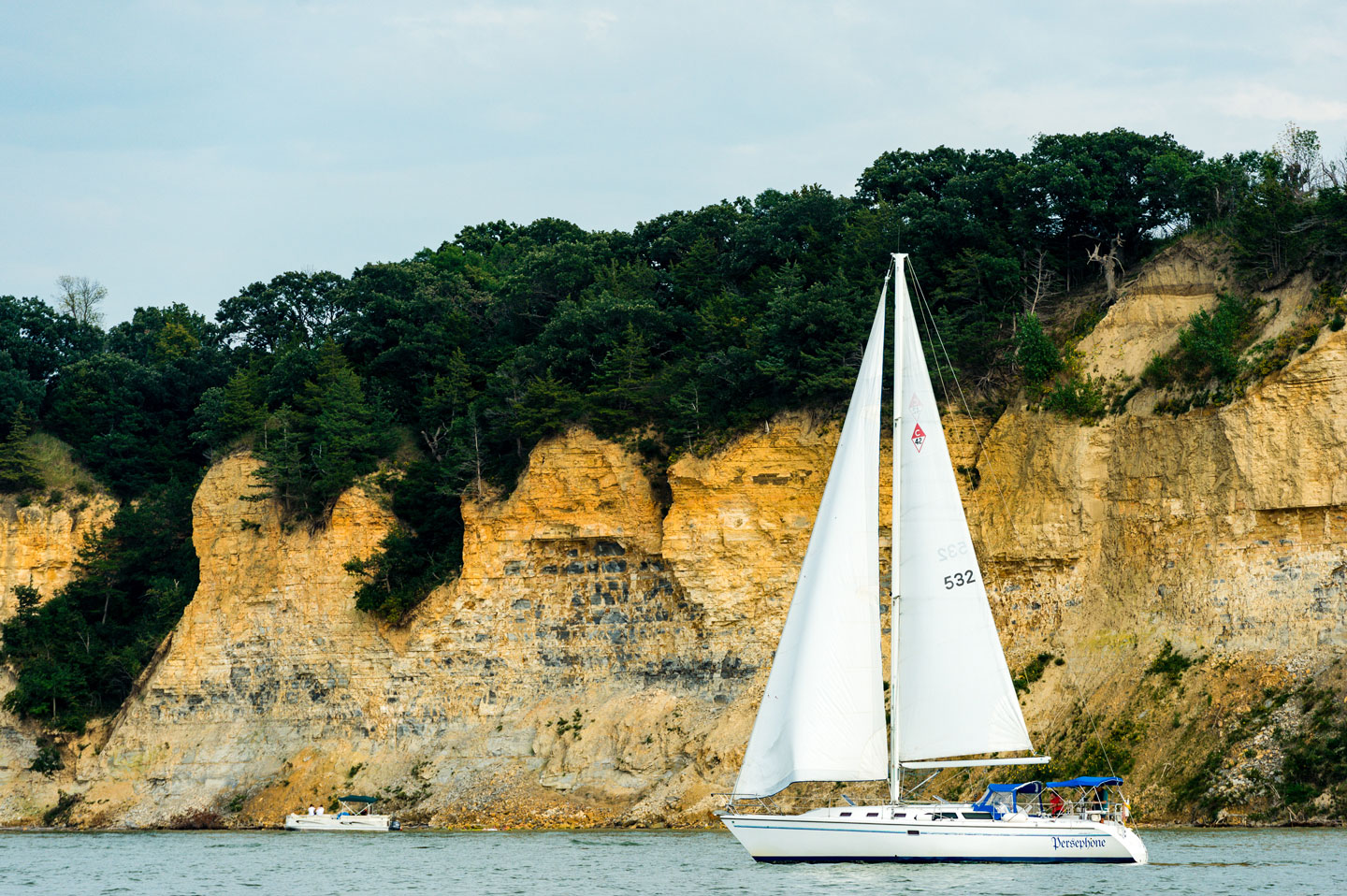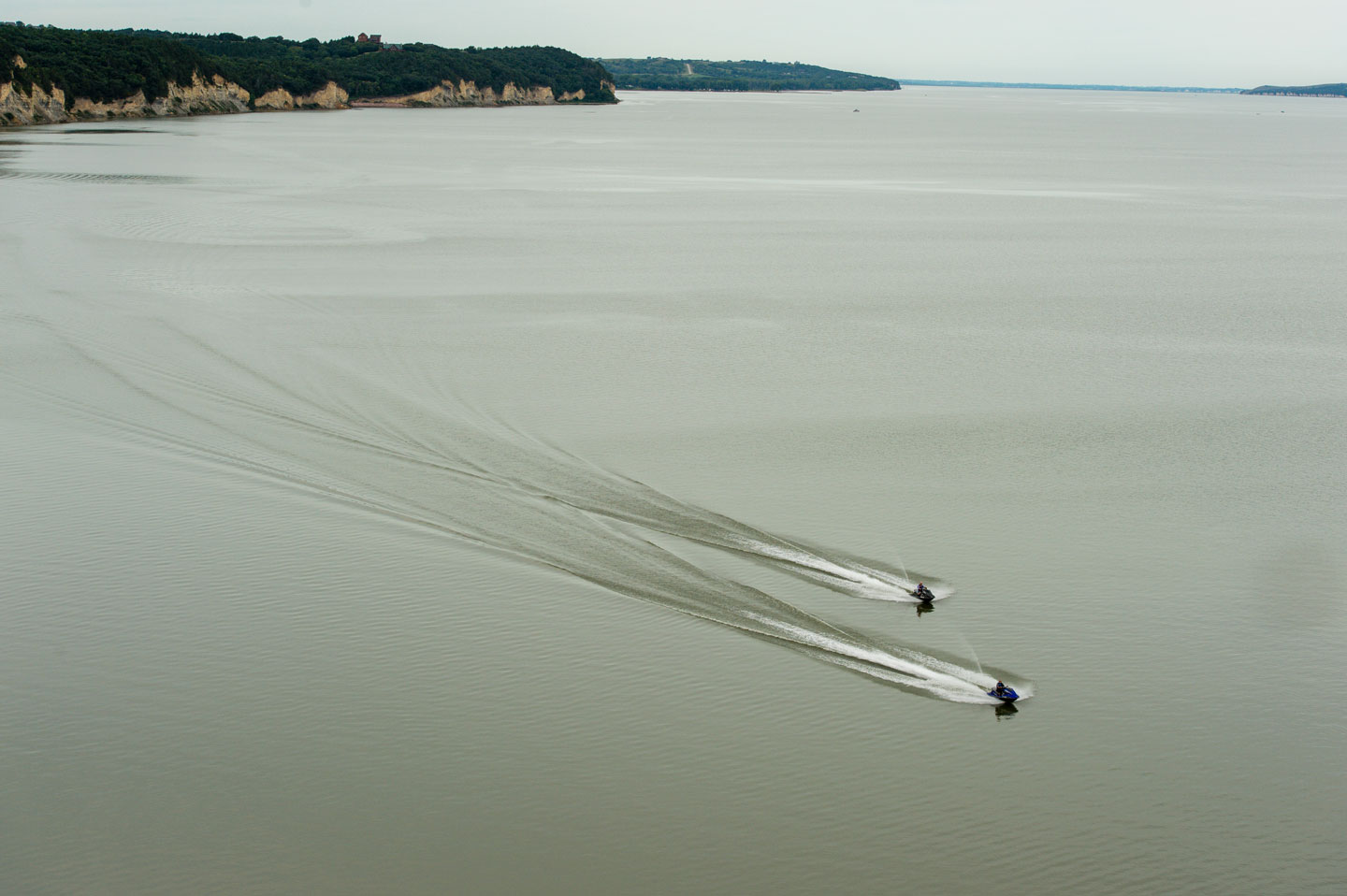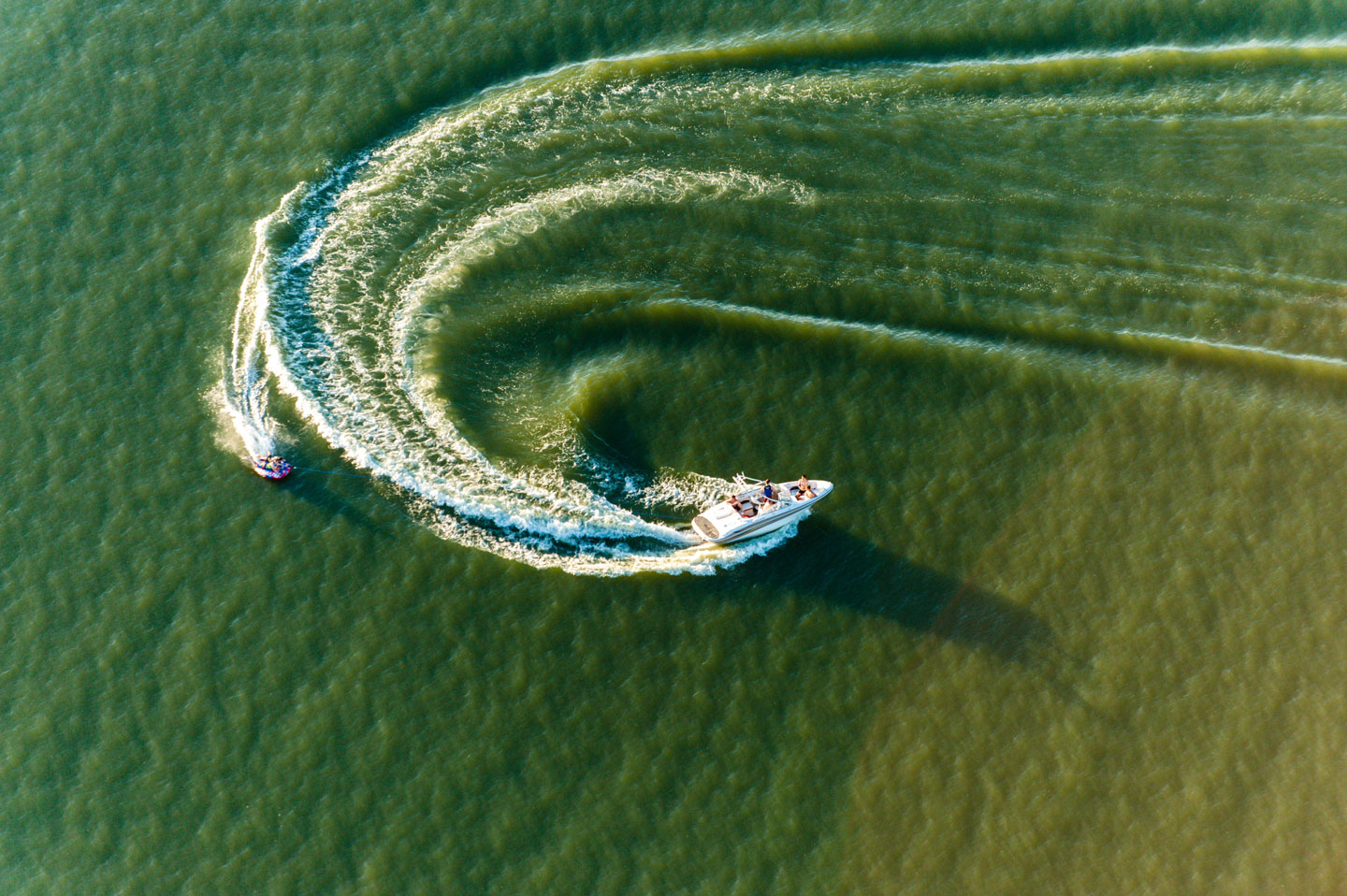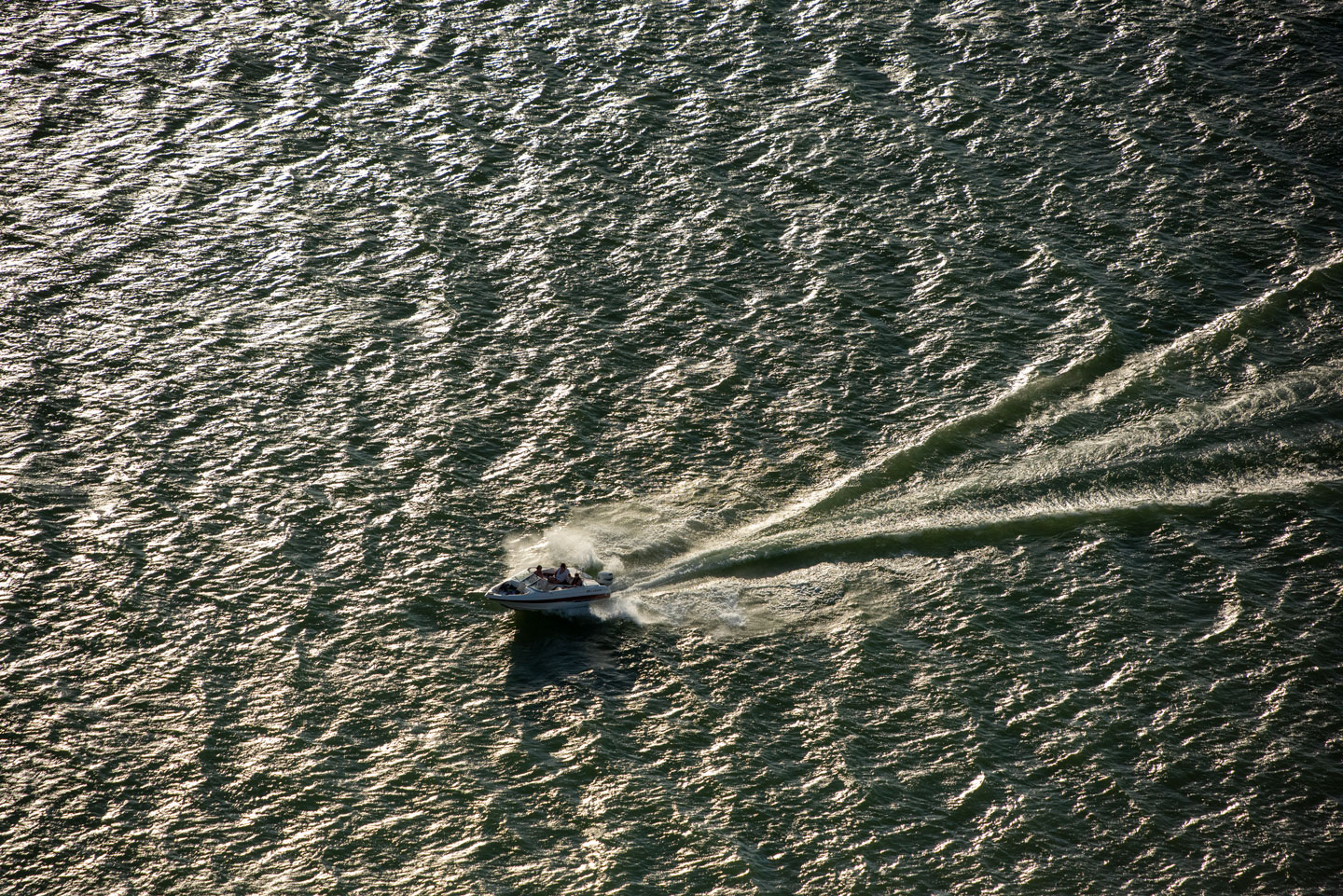Boating Regulations
Boating is a great recreational activity that can be enjoyed with friends and family of all ages. The information below will ensure that you have a fun, safe and legal experience out on the water.
Aquatic Invasive Species Stamp
Boaters who register their motorized watercraft in Nebraska are required to pay $5 in addition to their three-year boater registration fee. Boaters who register their motorized watercraft in any other state will be required to obtain a $15 Aquatic Invasive Species Stamp each year that they boat in Nebraska. This stamp is available for purchase online. A temporary stamp may be purchased at some state parks and recreation areas.
Alcohol and boating
Operating a motorboat in Nebraska with a blood alcohol content of .08 percent or greater constitutes Boating Under the Influence (BUI) and carries a penalty of up to $1,000 fine, up to six months in jail and the loss of boating privileges for six months.
- All vessels are responsible or any discomfort or injury to other persons or damage to vessels cause by their wake.
- Swimmers have the right of way at all times over all vessels.
- Any vessel not operating under mechanical power and any anchored vessel shall have the right of way over any vessel operating under mechanical power. Motorboat operators shall give such vessels reasonable clearance, so the wash and wake does not unnecessarily disturb said boats.
- Only authorized emergency-rescue or law enforcement vessels may be equipped with or use flashing red/blue lights or sirens.
- Any operator observing flashing red/blue lights on an approaching vessel shall immediately stop.
- Those navigating or attempting to navigate any stream-or river with nonpowered vessels may portage or otherwise transport their vessel around any fence or obstruction in such stream or river.
- It is unlawful to operate or give permission for the operation of a vessel that is not equipped as required (see all requirements below).
- It is unlawful to for any operator to exceed the speed posted or charted in any specific zone or area. Under all other circumstances speed must be reasonable and proper in consideration of the prevailing conditions.
- Speeds exceeding 5 mph are illegal at all times in or within 30 yards of any vessel, harbor, marina, landing pier, fishing pier, anchorage or bathing beach.
- It is unlawful to wake jump with a motorized vessel within 50 yards of another craft.
- Operating a motorboat with a blood alcohol content of .08% or greater constitutes Boating Under the Influence (BUI) and carries a penalty of up to $1,000 fine, up to six months in jail and the loss of boating privileges for six months. Refusal to submit to a chemical blood alcohol text will result in the same penalties as BUI.
- Personal watercraft cannot under any circumstances be operated from sunset to sunrise.
- Operation of vessels is prohibited within an area marked off or set aside as a prohibited area.
- Swimming or bathing is prohibited in any marinas or within 20 yards of launching, mooring or docking areas.
- No vessel may be tied off or attached to any buoy, marker or navigational aid on any waters in this state.
- It is unlawful to place or leave, in any public waters, any vessel not safe for operation.
- No child under 13 is allowed aboard any vessel when not wearing a Coast Guard-approved life preserver except when hunting waterfowl in an anchored boat. Operators shall be held responsible.
- No one under 14 shall operate motorboats of any class at any time. Owners shall be held responsible.
- Each personal watercraft operator must wear a lanyard-type engine cutoff switch if the personal watercraft is equipped by the manufacturer.
- Nebraska law requires any motorboat operator (including personal watercraft) born after 12/31/1985 to complete a Boating Safety Course and be in possession of a course certificate when operating the boat.
- It is unlawful to operate a motorboat from October 15 through January 15 of each Year on the following state wildlife refuges: Garden County Refuge, North Platte River, Lincoln County Refuge, North Platte River, Dodge-Saunders County Refuge, Platte River, Boyd-Holt County Refuge, Niobrara River
If any conservation officer or other law enforcement official of this state observes a vessel being operated without the proper equipment or with any other unsafe condition, he may direct the operator to correct the situation immediately or return to mooring until the hazard is corrected.
Overloading: All vessels when loaded must retain at least one-half of the total depth of the boat above the water when measured at the center of the vessel and must meet the requirement of the manufacturer’s capacity plate.
Waste/pollution: Every vessel with an installed toilet must have an operable U.S. Coast Guard certified marine sanitation device (MSD) Type I, II or III. If equipped with a “Y” valve, and when operating on Nebraska waters, the valve must be secured in the closed position by a padlock, non-releasable wire tie or removal of the handle, so that the valve can’t be used either accidentally or intentionally with the owner/operator’s knowledge. No wastes or container of such wastes shall be placed, left, or discharged into or near any waters of this state.
Rentals: Owners of motorboats for rent shall keep a record of the name and address of persons renting vessels designated or permitted by him to be propelled by any mechanical device. The record, including boat identification number, departure date and time, and expected time of return, shall be preserved for at least six months. Rental motorboats shall include all equipment prescribed by law for that class of boat.
In compliance with the State Boat Act, all motorboat owners must obtain a motorboat registration from their county treasurer. Before the Treasurer will issue a registration, a title must be obtained from the county clerk in the owner’s county of residence. Any motorboat manufactured after 1972 must have a valid Hull Identification Number (HIN). A HIN may be obtained from the Nebraska Department of Motor Vehicles (DMV). See your county clerk for further details. All motorboats manufactured before 1972 are exempt from titling but not from registration.
Federal law requires that all boats display a 12 character Hull Identification Number (HIN). The HIN must be located to the starboard side (right) of the motor on the transom within two inches of the top of the transom, gunwale or hull/deck joint – whichever is lowest.
License requirements: Upon application, motorboat owners will receive a certificate of number. This certificate shall be available for inspection by an officer whenever the motorboat is afloat. Certificates of number are valid for 3 years and expire on December 31 of the third year. The registration must be renewed at this time.
Duplicate/lost certificates will be issued by the county treasure for $4 ($1 replacement fee + $3 issuing fee).
Note: Any person holding a valid certificate of number who changes his address shall, within 15 days, notify the Game and Parks Commission of the new address.
The owner shall furnish the Game and Parks Commission notice of transfer of all or any part of his interest, within 15 days of the effective date. If the transfer of part ownership does not affect the owner’s right to operate the motorboat the transaction will not affect the certificate of number.
The owner shall notify the Game and Parks Commission of the destruction or abandonment of any vessel within 15 days, which will terminate the certificate of number.
License placement: The assigned numbers, which are designated on the certificate of number shall be placed on each side of the forward half of the vessel and reading left to right in one horizontal plane, starting with the validation sticker followed by two capital block letters “NB”) followed by a 2-inch space and three or four digits in a numerical group followed by a 2-inch space and two or three capital block letters.
Letters and numbers will be block figures at least three inches in height of contrasting color and visible for 100 feet.
Purchase of the letters and numbers except the validation sticker and the attachment to the motorboat are the responsibility of the owner.
No numbers and letters other than the registration numbers, letters and validation stickers shall be displayed on any mechanically-powered boat on either side of the forward half of the vessel.
The following equipment is required to be onboard anytime your motorboat is afloat. Refer to the Boating Guide for specific details.
- Life jackets/Flotation devices
- Fire Extinguisher (if motorboat has enclosed fuel tank, enclosed space or enclosed engine)
- Oars
- Bailing bucket
- Muffler
- Whistle or bell
- Backfire flame arrestor
- Ventilating
Every vessel (except sailboards) must carry one U.S. Coast Guard-approved Type I, II, III, or V life jacket of suitable size for each person on board. Each vessel (except personal watercraft canoes, kayaks and sailboards) must carry one U.S. Coast Guard-approved Type IV throwable device.
- Type I – Offshore life jacket: Designed to turn an unconscious person in water to a vertical or slightly backward position. 20 pounds buoyancy.
- Type II – Nearshore buoyant vest: Designed to turn an unconscious person in water to a vertical or slightly backward position. 19.5 pounds buoyancy.
- Type III – Floatation aid: Designed to keep a conscious person in water at a vertical or slightly backward position. 15.5 pounds buoyancy. This jacket has less turning ability than a type II jacket and is designed for water activities, such as skiing.
- Type IV – Throwable device: Designed to be thrown to a person in the water and not worn.
- Type V – Special use device: Special use life jackets include work vests, deck suits and hybrids for restricted use. Hybrid vests contain some internal buoyancy and are inflatable to provide additional flotation.
All vessels of every description, in use from sunset to sunrise (at night), must display the following lights as specified. No other lights may be used, except a spotlight for difficult navigation.
The white light must be visible for a distance of at least two miles. The red and green lights must be visible for a distance of at least one mile. The green light should be visible from the starboard side and the red from the port side.
All sailboats, when mechanically powered, shall display the lights required for that class of a mechanically powered boat. All motorboats and sailboats must carry a lantern for flashlight for emergencies. All vessels, while at anchor, must display the 360 degree white light (except while anchored in a docking or anchorage area).
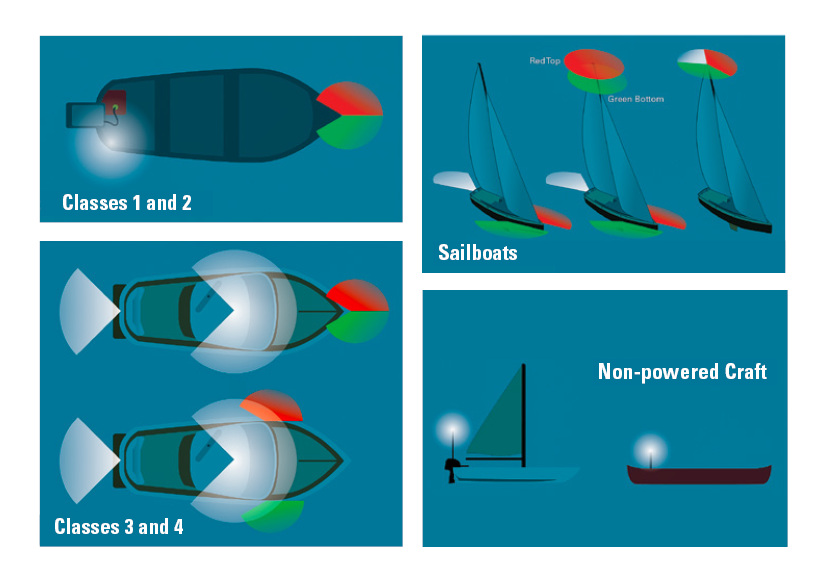
Navigation rules: A vessel shall be deemed to be overtaking when coming up to another vessel from a direction more than 22.5 degrees abaft her beam, that is, in such as position with reference to the vessel she is overtaking, that at night she would be able to see only the stern light of that vessel, but neither of her sidelights. In such case, the rights and privileges all rest with the leading vessel. The overtaking vessel has no rights whatsoever. In all instances an overtaking vessel must keep clear of an overtaken vessel.
Audible signals: When two vessels are approaching each other head on or nearly so, each operator shall swing the bow of his motorboat to the starboard to pass. Each operator shall give one short blast of the whistle and, in addition, indicate his course by swinging the bow of his motorboat substanially to starboard. Unnecessary sounding of whistles, horns, bells or other sound-producing devices is prohibited.
Channel buoys: Always pass between green and its companion red buoy. Keep red buoys to right and green to left while cruising upstream.
Uniform state waterway markings: The following signs are universal in meaning across all bodies of water.
- Danger: orange and white diamond shape
- Boats keep out: orange and white diamond shape with cross
- Controlled area: orange and while circle
- Information, names, distances, permitted activities: orange and white square or rectangle with text.

